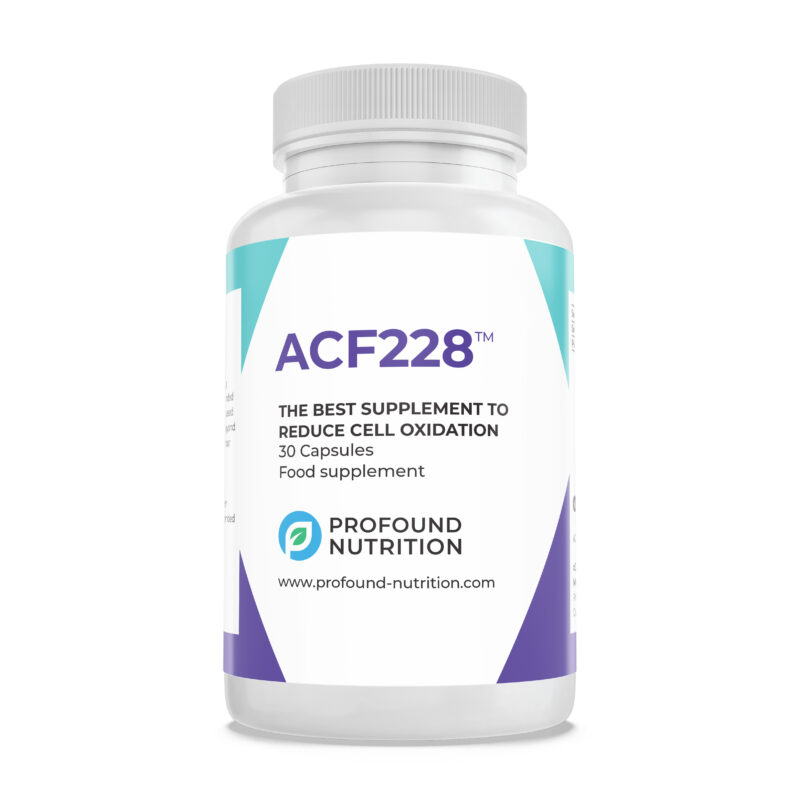Theories Of Aging
This section outlines some of the most widely accepted and major theories of the causes of aging. It is important to know the cause(s) of aging, because as with treating any disease one must first understand the problem, so that afterward the precise remedy can be applied.
It is our belief that some of these theories of aging may be a result of other theories. Many of them are interlinked, in the same complex way the biological processes of the body and the many factors affecting it are linked.
However, approaching any one or a combination of the following theories with a specialized treatment protocol will assist the aging problem on different levels, and help to slow down and eradicate some of the so-called Pillars of Aging.
Please note that we have not listed these theories in any particular order.
The DNA and Genetic Theories
Pictured: KLEINSEK PhD., DON
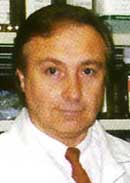
Some scientists regard this as a Planned Obsolescence Theory because it focuses upon the encoded programming within our DNA. Our DNA is the blue-print of individual life obtained from our parents. It means we are born with a unique code and a predetermined tendency to certain types of physical and mental functioning that regulate the rate at which we age.
But this type of genetic clock can be greatly influenced with regard to its rate of timing. For example, DNA is easily oxidized and this damage can be accumulated from diet, lifestyle, toxins, pollution, radiation and other outside influences.
Thus, we each have the ability to accelerate DNA damage or slow it down.
One of the most recent theories regarding gene damage has been the Telomerase Theory of Aging. First discovered by scientists at the Geron Corporation, it is now understood that telomeres (the sequences of nucleic acids extending from the ends of chromosomes), shorten every time a cell divides. This shortening of telomeres is believed to lead to cellular damage due to the inability of the cell to duplicate itself correctly. Each time a cell divides it duplicates itself a little worse than the time before, thus this eventually leads to cellular dysfunction, aging and indeed death.
Further recent research by Don Kleinsek Ph.D., of GeriGene Inc. (one of the few genealogists looking for the genes involved with aging), indicates that telomeres can be repaired by the introduction of the relevant hormone. In other words telomeres and their subsequent processes affect each other. It may be possible, (once we know what each telomere is responsible for), to precisely introduce the necessary hormone and aid genetic repair, as well as the hormonal balance etc.
Another key element in rebuilding the disappearing telomeres is the enzyme telomerase, (an enzyme so-far only found in germ and cancer cells). Telomerase appears to repair and replace telomeres helping to re-regulate the clock that controls the life-span of dividing cells (see the Hayflick Limit Theory of Aging for further details).
In future protocols it may be possible to introduce telomerase. But right now we know that free radicals damage DNA (see the Free Radical Theory of Aging) and so does glycosylation (see the Cross-Linking Theory of Ageing). Thus protocols for those two, as well as hormone replacement therapy may help prevent DNA damage.
The Neuroendocrine Theory
Pictured: Ward Dean MD above, and Professor Vladimir Dilman below.
First proposed by Professor Vladimir Dilman and Ward Dean MD, this theory elaborates on wear and tear by focusing on the neuroendocrine system. This system is a complicated network of biochemicals that govern the release of hormones which are altered by the walnut sized gland called the hypothalamus located in the brain.
The hypothalamus controls various chain-reactions to instruct other organs and glands to release their hormones etc. The hypothalamus also responds to the body hormone levels as a guide to the overall hormonal activity.
But as we grow older the hypothalamus loses it precision regulatory ability and the receptors which uptake individual hormones become less sensitive to them. Accordingly, as we age the secretion of many hormones declines and their effectiveness (compared unit to unit) is also reduced due to the receptors down-grading.
These are some of the reasons that Dr. Dean recommends receptor resensitizers such as the bi-guanidine drug Metformin (which improves insulin sensitivity) and the eugeroic drug Modafinil (which improves noradrenaline sensitivity).
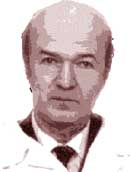 One theory for the hypothalamus loss of regulation is that it is damaged by the hormone cortisol. Cortisol is produced from the adrenal glands (located on the kidneys) and cortisol is considered to be a dark-hormone responsible for stress. It is known to be one of the few hormones that increases with age.
One theory for the hypothalamus loss of regulation is that it is damaged by the hormone cortisol. Cortisol is produced from the adrenal glands (located on the kidneys) and cortisol is considered to be a dark-hormone responsible for stress. It is known to be one of the few hormones that increases with age.
If cortisol damages the hypothalamus, then over time it becomes a vicious cycle of continued hypothalamic damage, leading to an ever increasing degree of cortisol production and thus more hypothalamic damage. A catch-22 situation.
This damage could then lead to hormonal imbalance as the hypothalamus loses its ability to control the system. Such an argument demands the use of cortisol adjusters (such as DHEA, Gerovital-H3 ® or Phenytoin) to help slow down the cortisol accumulation.
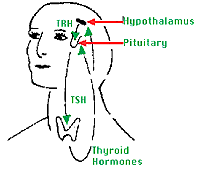
Dr. Dean also believes that the next-generation of hormone replacement therapy are the hypothalamus hormones (expected to be commercially available in the next few years). These types of natural supplements could present a whole new approach and concept to endocrine balance, control and improvement.
The Free Radical Theory
Pictured: Denham Harman MD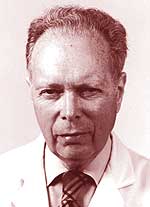
This now very famous theory of aging was developed by Denham Harman MD at the University of Nebraska in 1956. The term free radical describes any molecule that has a free electron, and this property makes it react with healthy molecules in a destructive way.
Because the free radical molecule has an extra electron it creates an extra negative charge. This unbalanced energy makes the free radical bind itself to another balanced molecule as it tries to steal electrons. In so doing, the balanced molecule becomes unbalanced and thus a free radical itself. Perhaps a bit like bumper-cars crashing into each other at the Fair?
It is known that diet, lifestyle, drugs (e.g. tobacco and alcohol) and radiation etc., are all accelerators of free radical production within the body.
However, there is also natural production of free-radicals within the body. This is the result of the production of energy, particularly from the mitochondria (see the Mitochondrial Theory of Aging). The simple process of eating, drinking and breathing forms free-radicals from the energy production cycles, as the body produces the universal energy molecule Adenosine Triphosphate (ATP). Note; oxygen is a potent free-radical producer.
Free radicals are known to attack the structure of cell membranes, which then create metabolic waste products (see the Membrane Theory of Aging). Such toxic accumulations interfere with cell communication, disturb DNA, RNA and protein synthesis, lower energy levels and generally impede vital chemical processes.
Free radicals can however be transformed by free-radical scavengers (otherwise known as anti-oxidants). Particular anti-oxidants will bind to particular free radicals and help to stabilize them.
Free radicals come in a hierarchy (according to their potential for damage) with the hydroxyl-radical and the superoxide-radical at the top of the list. It is therefore necessary to take a cross-section of anti-oxidants in order for the process of elimination of the free radicals to occur, otherwise higher damage free radicals may be converted into a greater number of lower damage free radicals.
Such a broad cross-section of anti-oxidants includes substances such as beta carotene, vitamin C, grape seed extract, vitamin E and possibly also stronger substances such as Hydergine, Melatonin and Vinpocetine.
The Membrane Theory of Aging
Pictured: Professor Imre Zs.-Nagy 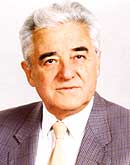
The membrane theory of aging was first described by Professor Imre Zs.-Nagy of Debrechen University, Hungary. According to this theory it is the age-related changes of the cells ability to transfer chemicals, heat and electrical processes that impair it.
As we grow older the cell membrane becomes less lipid (less watery and more solid). This impedes its efficiency to conduct normal function and in particular there is a toxic accumulation. This cellular toxin is referred to as lipofuscin and as we grow older lipofuscin deposits become more present in the brain, heart and lungs and also in the skin. Indeed some of the skin age-pigments referred to as liver or age-spots are composed of lipofuscin. It is known that Alzheimer Disease patients have much higher levels of lipofuscin deposits than compared to their healthy controls.
The cells declining efficiency also means that the essential and regular transfer of sodium and potassium is impaired, thus reducing communication. It is also believed that electrical and heat transfer is also impaired.
Professor Zs-Navy himself became involved in research to find substances that could aid in the removal of lipofuscin deposits and improve cellular lipidity and communication. The development was Centrophenoxine (Lucidril ®) which is perhaps the most efficient substance currently available; (interestingly, Professor Zs-Navy is currently working on an analogue). Other substances that have shown an ability to remove lipofuscin include DMAE and the amino-acids Acetyl-L-Carnitine and Carnosine.
The Hayflick Limit Theory
Pictured: Dr. Leonard Hayflick 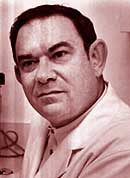
The Hayflick Limit Theory of Aging (so called after its discoverer Dr. Leonard Hayflick) suggests that the human cell is limited in the number of times it can divide. Part of this theory may be affected by cell waste accumulation (which is described in the Membrane Theory of Aging).
Working with Dr. Moorehead in 1961, Dr. Hayflick theorized that the human cells ability to divide is limited to approximately 50-times, after which they simply stop dividing (and hence die).
He showed that nutrition has an effect on cells, with overfed cells dividing much faster than underfed cells. As cells divide to help repair and regenerate themselves we may consider that the DNA & Genetic Theory of Aging may play a role here. Maybe each time a cell divides it loses some blue-print information. Eventually (after 50-odd times of division) there is simply not enough DNA information available to complete any sort of division?
We also know that calorie restriction in animals significantly increases their life-span. In essence less fed animals live longer. Is this because they are subject to less free radical activity (see the Free Radical Theory of Aging) and therefore less cellular damage? Or is it that insulin and glucose damage (see the Cross-Linking Theory of Aging and the Neuroendocrine Theory of Aging for details) is less prevalent in them than in overfed animals?
The Hayflick Theory indicates the need to slow down the rate of cell division if we want to live long lives. Cell division can be slowed down by diet and lifestyle etc., but it is also surmised that cell-division can be improved with many of the protocols of the other aging theories described herein.
The use of ribonucleic acids (RNAs, the building-blocks of DNA), improve cell repair processes, enhance cellular capabilities and increase the maximum number of cell divisions in animals and vitro tests. Human clinical studies with RNA supplements such as NeyGeront ® and RN13 ® indicate that there are a number of biological, physiological and practical improvements for geriatric patients.
If laboratory results prove true also for the individual, then Carnosine will be another potent Hayflick Limit extender.
The Mitochondrial Decline Theory
The mitochondria are the power producing organelles found in every cell of every organ. Their primary job is to create Adenosine Triphosphate (ATP) and they do so in the various energy cycles that involve nutrients such as Acetyl-L-Carnitine, CoQ10 (Idebenone), NADH and some B vitamins etc.
 ATP is literally the life giving chemical because every movement, thought and action we make is generated from it. Yet very little ATP can be stored in the body.
ATP is literally the life giving chemical because every movement, thought and action we make is generated from it. Yet very little ATP can be stored in the body.
It is estimated that a 180 lb. man needs to generate an average of 80-90 lbs. of ATP daily! Under strenuous exercise the use of ATP may rise to as much as 1.1 lbs. per minute! But reserves of ATP are considered to be no more than 3-5 ounces, thus under those same strenuous exercise conditions that’s approximately 8-seconds worth! Thus it becomes apparent that the mitochondria have to be very efficient and healthy, in order to produce a continuous supply of essential ATP for the necessary repair and regenerative process to occur.
Chemically speaking, under normal conditions the mitochondria are fiery furnaces and subject themselves to a lot of free radical damage (see the Free Radical Theory of Aging). They also lack most of the defenses found in other parts of the body, so as we age the mitochondria become less efficient, fewer in number and larger. Accordingly, ATP production declines.
As organs cannot borrow energy from one another, the efficiency of each organs mitochondria are essential to that particular organs repair processes and functions. If a particular organs mitochondria fail, then so does that organ (which of course can lead to death).
Enhancement and protection of the mitochondria is an essential part of preventing and slowing aging. Enhancement can be achieved with the above mention nutrients, as well as ATP supplements themselves. Protection may be afforded by a broad spectrum of anti-oxidants substances, as well as substances such as Idebenone and Pregnenolone.
Of particular use may be Acetyl-L-Carnitine and Hydergine, both of which have been proven in experiments to greatly improve the mitochondria condition of aged animals.
Also see.
The Cross-Linking Theory
The Cross-Linking Theory of Aging is also referred to as the Glycosylation Theory of Aging. In this theory it is the binding of glucose (simple sugars) to protein, (a process that occurs under the presence of oxygen) that causes various problems.
Once this binding has occurred the protein becomes impaired and is unable to perform as efficiently. Living a longer life is going to lead to the increased possibility of oxygen meeting glucose and protein and known cross-linking disorders include senile cataract and the appearance of tough, leathery and yellow skin.
Indeed, you can see cross-linking in action now. Simply cut an apple in half and watch the oxygen in the air react with the glucose in the apple as it turns yellow and brown and eventually becomes tough.
Diabetes is often viewed as a form of accelerated aging and the age related imbalance of insulin and glucose tolerance leads to numerous problems; these have been called Syndrome X. In fact, diabetics have 2-3 times the numbers of cross-linked proteins when compared to their healthy counterparts.
The cross-linking of proteins may also be responsible for cardiac enlargement and the hardening of collagen, which may then lead to the increased susceptibility of a cardiac arrest.
Cross linked proteins have also been implicated in renal disorders.
It is also theorized that sugars binding to DNA may cause damage that leads to malformed cells and thus cancer.
The modern diet is of course a very sweet one and we are bombarded with simple sugars from soft drinks and processed foods etc. One obvious example to reduce the risk of cross-linking is to reduce sugar (and also simple carbohydrates) in ones diet. Some pharmacological interventions that could help reduce the carbohydrate/ starch/ glucose intake and affect, include Acarbose and Metformin.
But other supplements are also appearing that show great promise in the battle to prevent, slow and even break existing cross-links. Two of the most important at present are Aminoguanidine and the amino-acid Carnosine.
